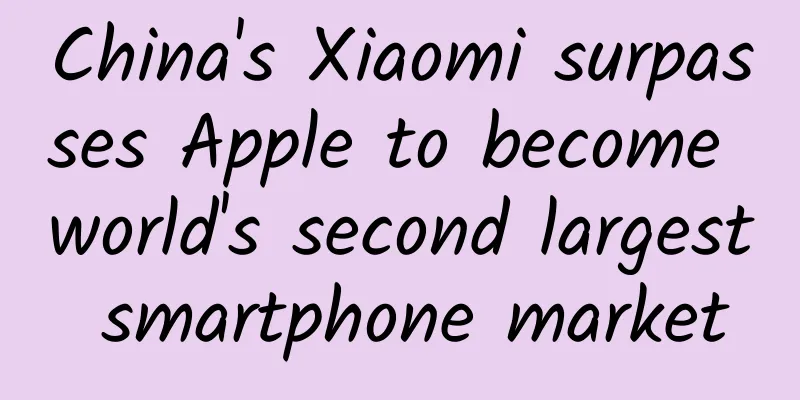China's Xiaomi surpasses Apple to become world's second largest smartphone market

|
Xiaomi now has a 17% share of global smartphone shipments, ranking second behind Samsung, which has 19%, and Apple, which has been squeezed into third place with 14%. Xiaomi is also ahead of BBK-owned Oppo and Vivo, which each have 10% market share.
Data from the analysis company Canalys shows that Xiaomi's overseas business is growing rapidly. Especially in developing countries, Xiaomi's mobile phone shipments are growing rapidly. For example, shipments in Latin America have increased by 300% year-on-year. In developed countries, Xiaomi's growth rate is slightly slower, but it should not be underestimated. In Western Europe, it has increased by 50%. At the current rate of development, Xiaomi will soon become the world's largest smartphone brand. Overall, Xiaomi had the fastest growth among the three major global brands, with global smartphone shipments increasing 83% year-on-year. Samsung and Apple grew 15% and 1% respectively. Canalys research manager Ben Stanton said Xiaomi is growing very rapidly, but is still skewed towards the mass market, with the average selling price of its phones being 75% cheaper than Apple's. Indeed, Xiaomi is cheaper than its international competitors. Xiaomi's average selling price is much lower than Samsung (40%) and Apple (75%), and even flagship products like the Xiaomi Mi 11 are relatively cheap. This has helped Xiaomi achieve strong international market expansion. Can Xiaomi maintain its current position? The second quarter of this year is historically weak for Apple as it reaches the end of a particular iPhone release cycle. Canalys also pointed out that Oppo and Vivo are not standing still, they have the same goals, and both are willing to invest heavily in offline marketing to compete with Xiaomi. Xiaomi also needs to make a name for itself in the high-end market, and earlier this year it launched the Mi 11 Ultra, a premium smartphone that starts at 5,999 yuan ($928). It also launched the Mi Mix Fold, its first foldable phone, at 9,999 yuan. The success of the 11 Ultra and Mi Mix Fold will be crucial to Xiaomi's next steps. Xiaomi's domestic rivals Oppo and Vivo are also trying to break into the high-end market. This will be an uphill battle. At present, Apple and Samsung still firmly occupy the global high-end mobile phone market share, and their brand image is more deeply rooted in the hearts of the people. Xiaomi still has a lot of work to do in this regard. However, in the mass market, Samsung and Apple are destined to be unable to compete with Chinese companies. Still, even a temporary second place would be notable. Xiaomi has had an uphill battle to gain international recognition. Now that it's big enough to compete with giants like Samsung and Apple -- the question is whether it can become a frontrunner. In addition, amid global supply shortages, all suppliers are working hard to secure component supplies, but Xiaomi has already set its sights on the next goal: replacing Samsung as the world's largest component supplier. While smartphones still account for the bulk of Xiaomi's revenue, the company is looking to enter new areas. In March, the tech company announced plans to launch an electric vehicle business and invest $10 billion over the next 10 years. |
<<: Four reasons you don't need to replace your smartphone every year
Recommend
What short video methods did the popular Li Ziqi use?
The rise of short video media has driven traffic ...
Sony suffered a great loss due to "mountaintopism"
While the words "SONY 4K" filled the Bra...
How to analyze data in product operations?
Today we will talk about the last element of the ...
The mortgage interest rate will be re-signed starting today, here are the details of the 2020 mortgage interest rate re-signing!
Starting from today (March 1st), there will be an...
A guide to visiting the Forbidden City during the National Day holiday, helping you understand the Forbidden City!
This article was first published by Hunzhi (WeCha...
User growth and basic process!
However, today's article wants to do one thin...
Dream come true in Paris! Fan Zhendong's super grand slam! Why did he roar after winning?
Review expert: Chen Mingxin, national second-leve...
Are freshly slaughtered pork and beef the freshest and most delicious? Here’s how to choose and cook pork, it’s healthy and delicious!
Author: Xue Qingxin, member of Chinese Nutrition ...
Simultaneous interpreters out of work? BBC launches computer-automated news translation service
According to a report by the BBC Chinese website ...
This flower gives scientists a headache! It can also transform into 72 different forms!
"Seventy-two Transformations" is one of...
How to wear an N95 mask? How long can an N95 mask be worn at a time?
Masks are being snatched up everywhere, manufactu...
AppStore latest review guidelines 2017
Apps are changing the world, enriching people’s l...
How to use coupons for promotion, here are 4 tips for you!
Coupons are the most commonly used tool in our op...
Google releases first developer preview of Android 12
Google has released the first developer preview o...
618. How to monitor the Double Eleven promotional activities?
Every year’s 618 is very special. At that time, a...









